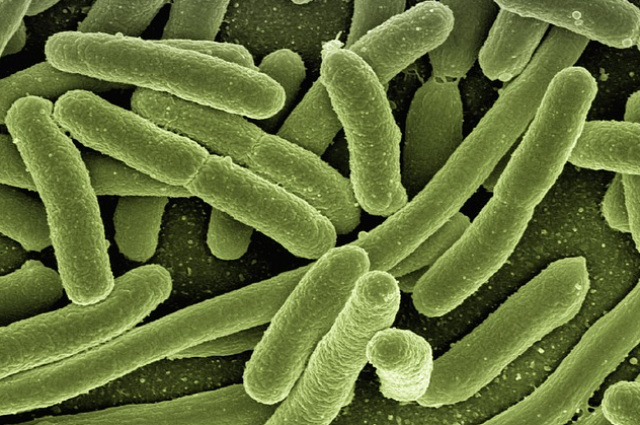
Image by Gerd Altmann from Pixabay
Okay, quick thought experiment: what if you could ditch your charging cable and power your phone by dunking it into a jar of mud? Absurd, right? Except… not entirely. Because deep in sediments, sewage plants, and even river bottoms, there are microbes pulling electrical stunts so strange they feel ripped from sci-fi. Some of them literally wire themselves into rocks—breathing metals instead of air—and in the process, they generate electricity. Yeah. Bacteria as electricians. Wild.
The Shocking Discovery
Most creatures rely on oxygen. Simple: inhale, exhale, survive. But Geobacter and Shewanella? Not quite. Instead of oxygen, they “exhale” electrons onto metals and minerals. Imagine plugging a microscopic USB cable straight into a rusty rock. That’s their daily life.
The big “a-ha” moment came back in 1987, when microbiologist Derek Lovley isolated Geobacter metallireducens. At first, it looked like just another mud bug. But then came the surprise: it was “breathing” solid iron. Not dissolved particles—actual chunky oxides. Turns out, bacteria had been silently running electrical engineering projects in soil long before Edison dreamed up the light bulb.
And the kicker? These microbes aren’t rare freaks. They’re basically everywhere—groundwater, sediments, wastewater systems—quietly doing their electron-dumping thing.
Tiny Wires, Big Shock
Zoom in closer and things get crazier. Shewanella oneidensis has an internal relay ladder—proteins like CymA, MtrA, and MtrC—that move electrons from inside the cell, across the periplasm, right out to the surface. It’s a full-blown biological circuit.
When oxygen runs scarce, Shewanella throws in a plot twist: it grows nanowires. Not metaphorical ones. Actual protein filaments that conduct electricity. Some reach conductivities of around 5 millisiemens per centimeter—comparable to engineered materials.
But Geobacter? They went further. Instead of sticking with cytochromes, they hacked their own pili (normally sticky appendages) and rewired them into conductive cables. Cryo-EM images show aromatic amino acids stacked like molecular highways. Translation: Geobacter literally engineered itself into living copper cable.
Nature, flexing hard.
So… Bacteria Batteries?
This is where headlines usually scream: “Bacteria power a light bulb!” And yes, that happens. But the truth? The electricity is still modest.
Their real superpower lies elsewhere:
- Wastewater treatment – They chow down on organic waste while generating current, which doubles as a health signal for the process.
- Uranium cleanup – Geobacter sulfurreducens can lock soluble uranium into insoluble form, trapping it safely. Bonus: the current tells scientists if the cleanup is working.
- Biosensing – Their current output maps exactly to what they’re eating, making them natural pollutant detectors. Drop them in water, and they become real-time, self-powered sensors.
Outer Space, Inner Potential
Now imagine a Mars habitat. Every resource counts. Waste needs recycling. Clean water must be constant. Electricity is premium. Enter electric microbes. Feed them organic waste, and they’ll not only break it down and recover energy but also report system performance—through electron flow.
Back on Earth, scientists are wiring them into biofactories. Feed Shewanella electrons, and it doesn’t just survive—it cranks out hydrogen gas or specialty compounds. Living factories literally running on electricity.
Biology Meets Circuits
Whether or not they charge the latest iPhone, these bugs have opened a huge door: biology that seamlessly interfaces with electronics. Researchers are mapping protein pathways, engineering strains, and dreaming up reactors where biofilms act like squishy circuit boards.
This is bioelectronics—the fusion of chemistry, physics, and microbiology. The idea that cells can not only live but conduct electricity could reshape sensors, reactors, and even space travel.
Mud Puddle Charger?
Alright, reality check: don’t toss your charger yet. Microbial fuel cells aren’t putting Apple out of business anytime soon. Power densities are too low, scaling remains a challenge, and keeping oxygen out isn’t trivial.
But here’s where they shine: niches where no normal battery dares to go. Remote wetland sensor? They’ll power it indefinitely. Groundwater cleanup? They’ll do it while sending back data. Wastewater plants? Pilot systems are already underway. Mars? Don’t bet against it.
So no, your phone won’t sip mud current tomorrow. But bacteria wiring themselves into metal, breathing it, and living off the process? That’s the kind of scientific madness that makes you grin.
Phones are cool.
References
- Lovley, D. R., & Phillips, E. J. P. (1987). Rapid assay for microbially reducible ferric iron in aquatic sediments. Applied and Environmental Microbiology, 53(7), 1536– 1540. https://doi.org/10.1128/aem.53.7.1536-1540.1987
- Reguera, G., McCarthy, K. D., Mehta, T., Nicoll, J. S., Tuominen, M. T., & Lovley, D. R. (2005). Extracellular electron transfer via microbial nanowires. Nature, 435(7045), 1098– 1101. https://doi.org/10.1038/nature03661
- Pirbadian, S., Barchinger, S. E., Leung, K. M., Byun, H. S., Jangir, Y., Bouhenni, R. A., ... & ElNaggar, M. Y. (2014). Shewanella oneidensis MR-1 nanowires are outer membrane and periplasmic extensions of the extracellular electron transport components. Proceedings of the National Academy of Sciences, 111(35), 12883–12888. https://doi.org/10.1073/pnas.1410551111
- Wang, F., Gu, Y., O’Brien, J. P., Yi, S. M., Yalcin, S. E., Srikanth, V., ... & Malvankar, N. S. (2019). Structure of microbial nanowires reveals stacked hemes that transport electrons over micrometers. Nature, 568(7750), 60–64. https://doi.org/10.1038/s41586-019-1101-4
- Logan, B. E., Rossi, R., Ragab, A. A., & Saikaly, P. E. (2019). Electroactive microorganisms in
- bioelectrochemical systems. Nature Reviews Microbiology, 17(5), 307– 319. https://doi.org/10.1038/s41579-019-0173-x
- Rosenbaum, M. A., & Franks, A. E. (2014). Microbial electrochemistry and engineering: The rise
- of living electrode interfaces. Current Opinion in Biotechnology, 29, 93– 99. https://doi.org/10.1016/j.copbio.2014.02.004
